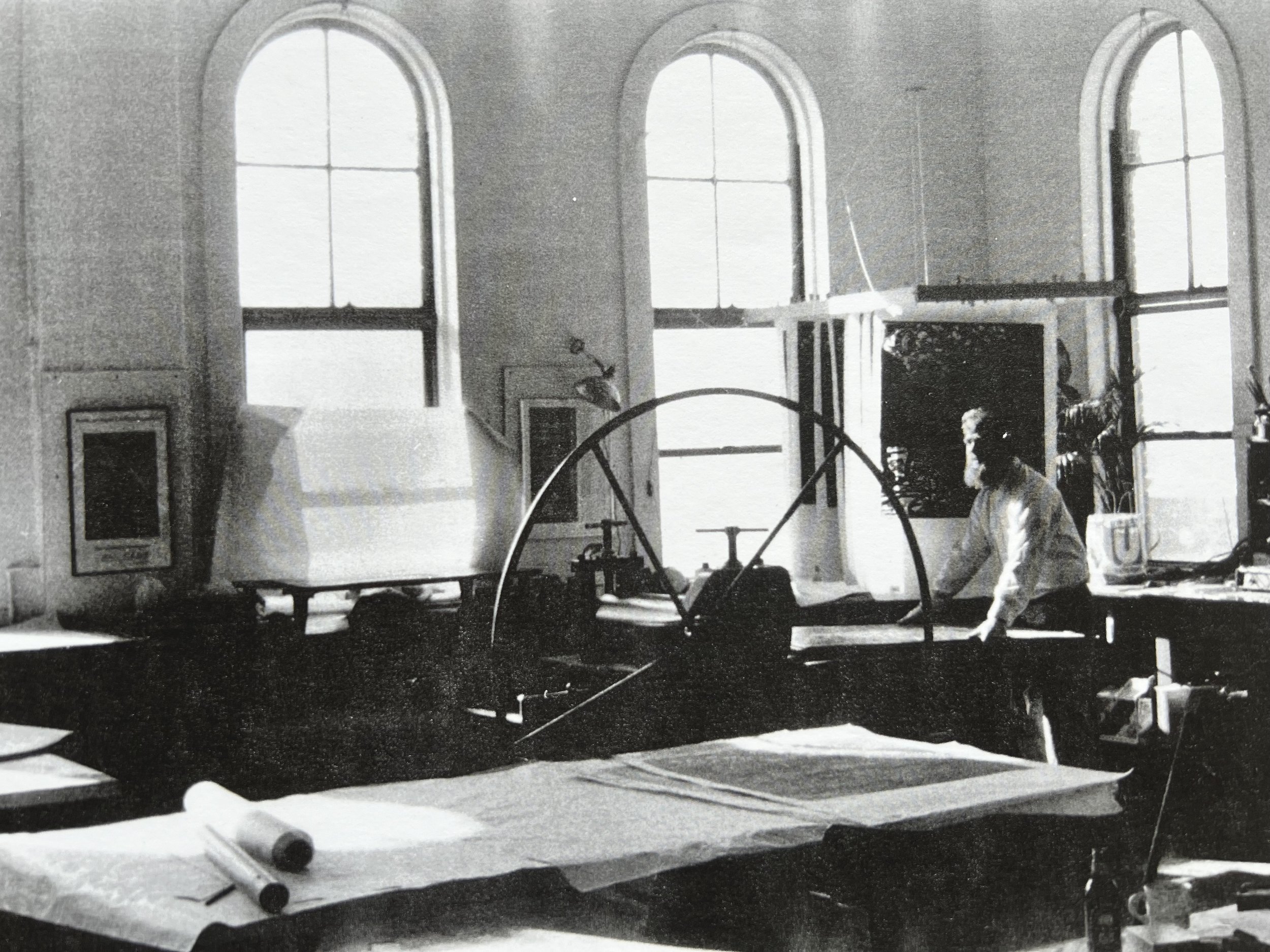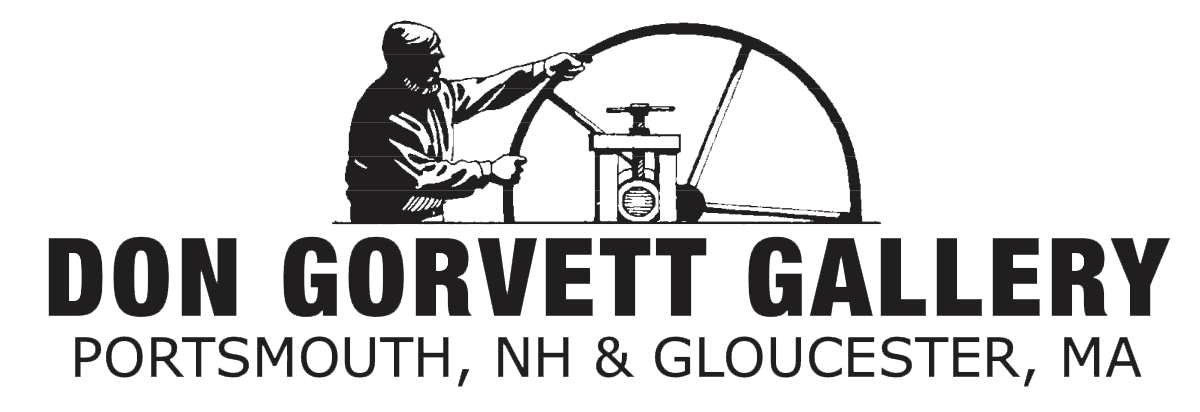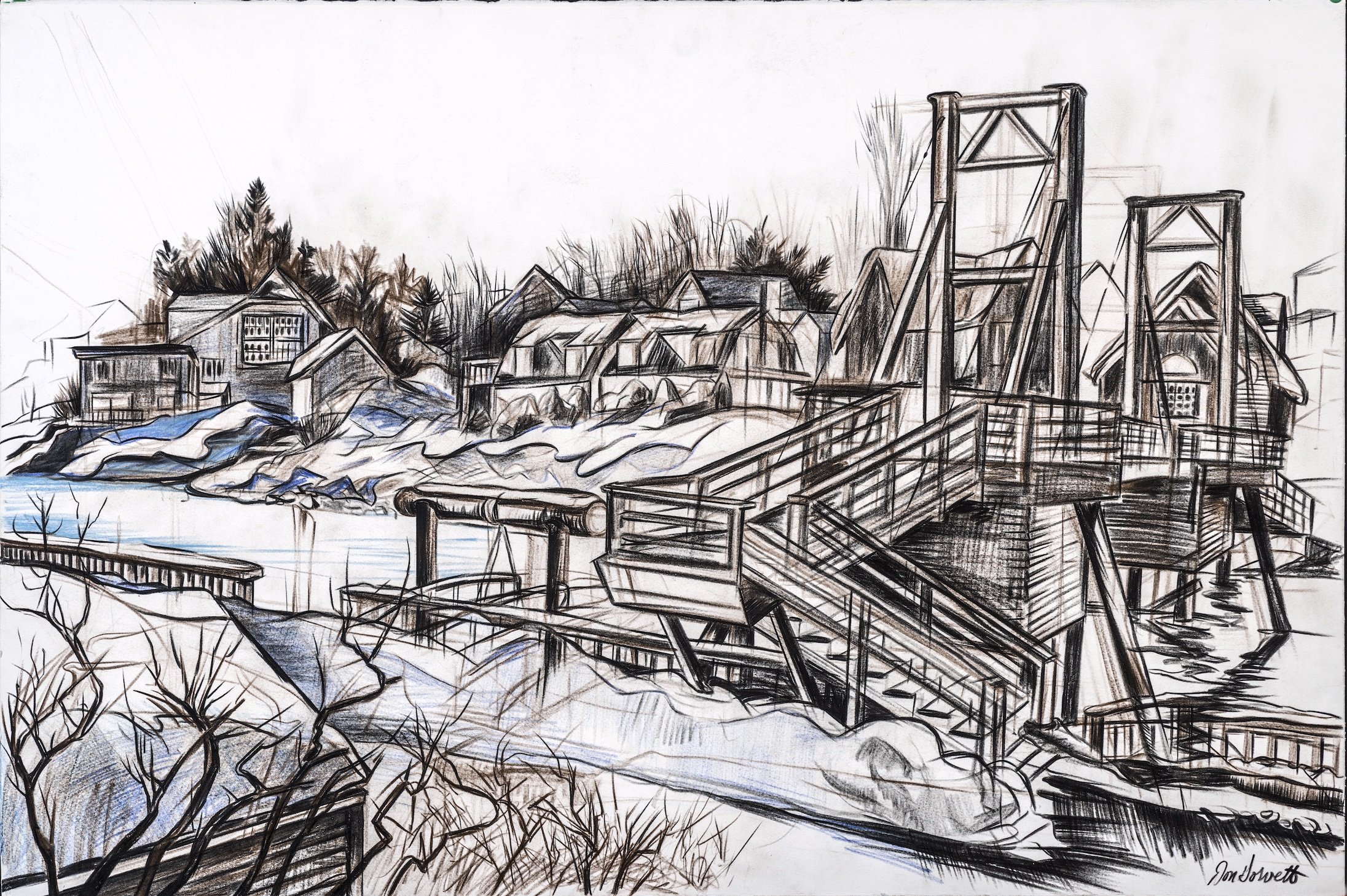
MAKING A REDUCTION WOODCUT
The making of the reduction woodcut Moonlight Drawbridge
Don Gorvett guides us through his technique for the reduction woodcut process in an eight-minute video. He captures a wintery scene in Perkins Cove, Ogunquit, Maine, through the reduction woodcut Moonlight Drawbridge. Filmed and produced by Steve Galante, 2015.
Moonlight Drawbridge, Reduction woodcut, edition 25, size 23 x 35 inches
Moonlight Drawbridge, study, color pencil on Rag paper, 23.5 x 35 inches.
What is a Reduction Woodcut?
Woodcut is the oldest form of printmaking, dating back to ninth-century China. It is a relief printing process in which the design is cut into the surface of a wooden block with hand-carving tools. The raised areas that remain after the block has been cut are inked and printed, while the recessed areas that are cut away do not carry ink during the printing process.
The reduction woodcut was taught at schools and used by professional printers in the first half of the twentieth century in Europe. Pablo Picasso, often given credit for inventing the process, adopted the printing technique at the suggestion of his printer, Hidalgo Arnéra. In 1964, Don Gorvett was introduced to the method by his high school art teacher and mentor, Elinor Marvin. That same year, they attended an exhibit of Picasso’s linocuts at the Museum of Fine Arts, Boston, which left a deep impression on the young artist.
The reduction process uses one block for all the colors by layering the inks from light to dark, one color at a time. The block is cut between each color, reducing the block’s inking surface and increasing the negative space or window in which the previously printed color is revealed. This also prepares the block’s surface for the next color. Don's reduction woodcuts are usually 8 to 11 colors, with some exceptions. The edition number, or the number of prints pulled from the block, is determined before cutting and printing and is limited to that number only. Once the reduction woodcut print is finished, all that remains on the block is the raised surface of the last color printed.
Reduction woodcut steps illustrated.
Below are four of ten states of the reduction woodcut Sea Castles at Windhoek. The woodblock for Sea Castles is fir plywood that has achieved a beautiful honed finish from the progressive carving, inking, and cleaning of the block between each impression.
Both the woodcut print and the block are very important to the artist. Don's sense of visual beauty extends to the texture and surface of the block as it does to the print. The blocks are cut skillfully and with great care. In the reduction woodcut process drawing, painting, and sculpting come together.
Sea Castles, first state - white ink printed
Sea Castles, third state
Sea Castles, fourth state
Sea Castles, sixth state
Sea Castles, finished reduction woodcut.
(1988) Sea Castles at Windhoek, Reduction woodcut, edition 17, size 29 x 42 inches. Below, Fir plywood, size 29 x 47 in. Both the reduction woodcut and woodblock are in the collection of The Museum of Fine Arts, Boston, MA.








